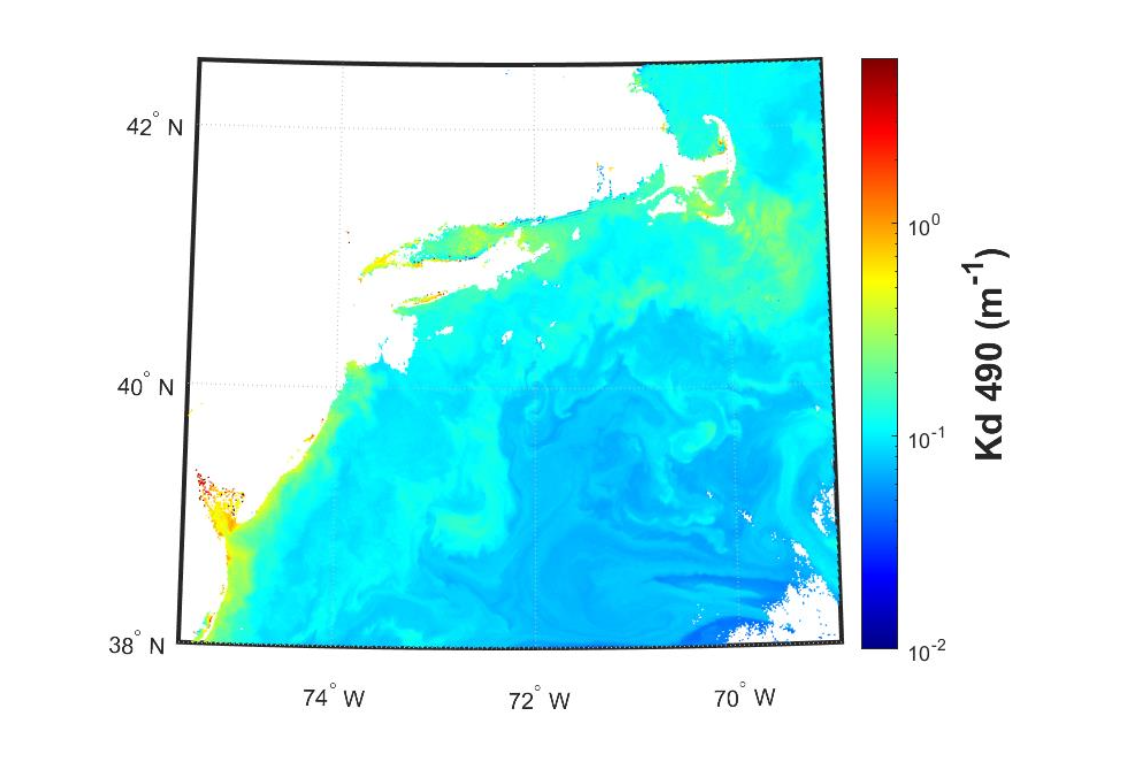8 Diffuse attenuation coefficients (Kd)
What is it?
As light enters the water column, it is attenuated exponentially with depth until it has been absorbed completely. The light attenuation coefficient (Kd) is a measure of the exponential slope of this light extinction, providing an indicator of how deep light can penetrate into the water column. This enables the quantification of light intensity and quality at any depth.
How does it impact Aquaculture/Fisheries?
Light influences all lifecycle stages of fish including egg and larvae survival, smolt timing, and maturation during the on-growing phase and broodstock spawning. Light attenuation changes can feasibly be used to effectively track aquaculture outflow, as well as incoming pollution sources. Light attenuation also impacts water visibility, and by extension fisheries catchability, foraging success, reproductive behavior, UV exposure, territoriality, and predation. Kd is also the term used to derive euphotic depth.
What are the limitations/caveats?
Kd algorithms are among the more robust products offered in the ocean color suite, depending on how they are derived. Semi-analytical approaches reduce uncertainty in turbid, optically complex waters relative to more simple empirical approaches.
Does HYPERSPECTRAL directly improve/enable this product?
It does, in that it offers a full suite of Kd coefficients across the visible spectrum. Historically, only the blue/green wavelength (490 nm) is utilized for most applications. With the full spectrum, the exact light quality can be determined at any depth, and also pinpoint the exact wavelength of light that penetrates the deepest into the water column, improving estimates of water visibility. Note, while computable, water visibility is not a standard operational product offering.
